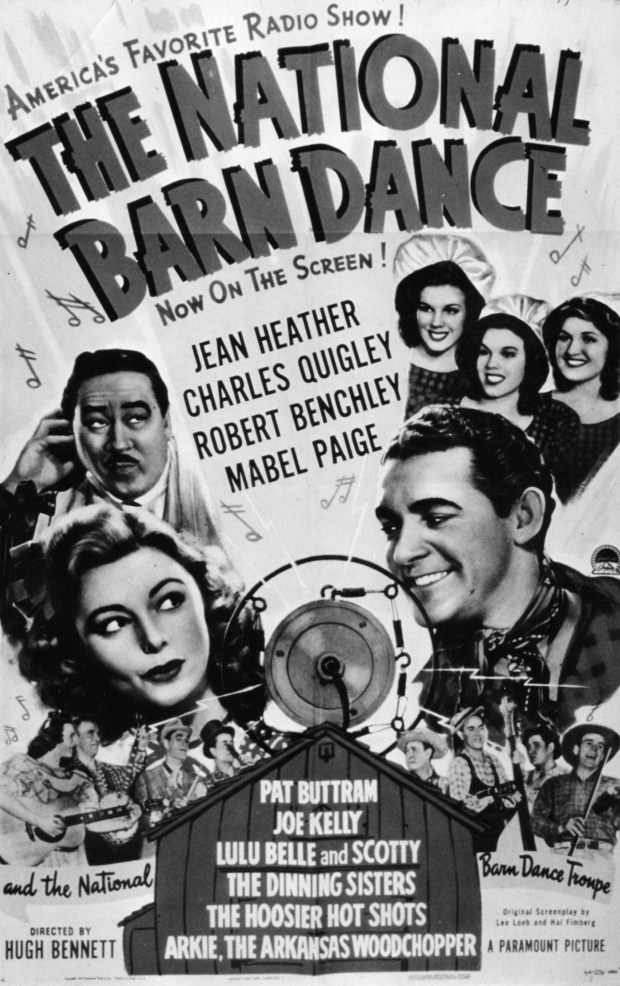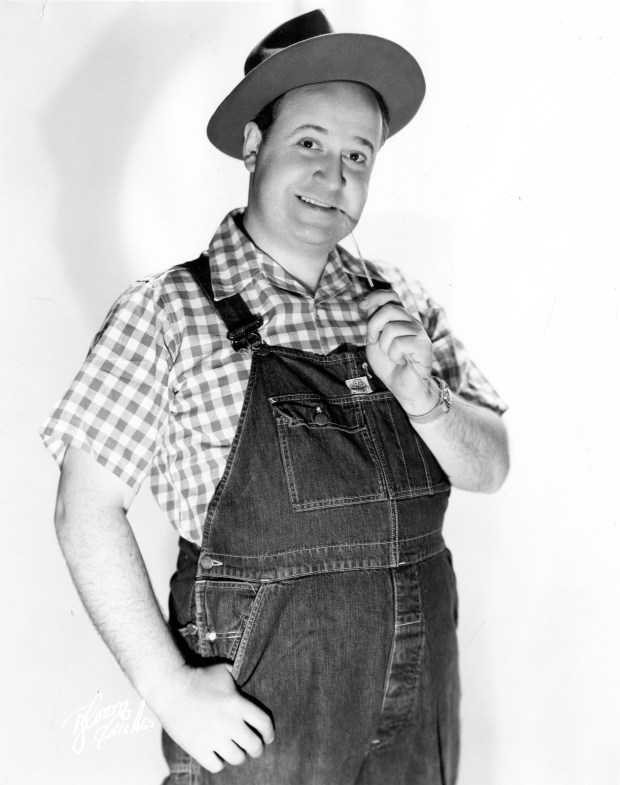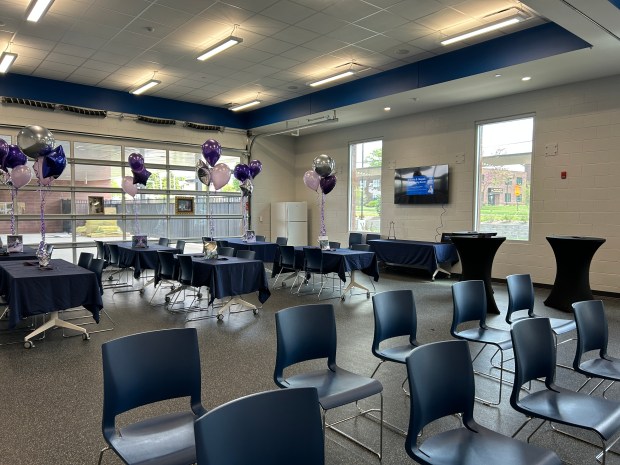Two relatively young men were sitting in a radio studio a few days ago talking about a radio show that started 100 years ago and one of them was saying, “This part of the city’s history should be better known, the part the city, this radio show, played in popularizing country music. Without Chicago, there would have been no Nashville, no Grand Ole Opry. … This is where the country music genre was born.”
That was Paul Durica, historian and producer. Sitting with him was musician Jefferey Thomas and together, along with dozens of other performers of all stripes, they will be celebrating this notion, bringing it back to life at the Hideout in “Hey, Hey, the Gang’s All Here: A Chicago Barn Dance.” It’s described as a “live radio show looking at 100 years of country music in the city.”
It’s an ambitious and potentially delightful concoction, based on a radio show that first went on the air on the Saturday night of April 19, 1924. Frankly and forcefully — surprising to many too — it wowed the country, or at least that portion of it that listened to radios.
It was a new program at a new station, “National Barn Dance” on WLS, and it advertised itself as simply a show of “old-time fiddle music.”
“This show made perfect sense for WLS not only to attract listeners in rural areas but also spark the sales of radio available from their Sears, Roebuck and Co. catalog,” Durica says.
The station’s call letters stood for “World’s Largest Store” and its motto was “Bringing the world to the farm.” So it seemed obvious to play music that would appeal to rural customers, Sears customers. What shocked many was that a vast number of listeners were in cities, particularly Chicago, and that enabled the station to allow country music to emerge as a serious genre.
Durica was inspired to create this event by writer Mark Guarino’s book “Country and Midwestern: Chicago in the History of Country Music and the Folk Revival,” which was published by University of Chicago Press in 2023.
Guarino says, “The Barn Dance on WLS established the blueprint for what would become the modern marketing of country music to mass market America. Long before the genre was named, country music flourished on the WLS airwaves, which transformed the music from a local commodity in communities throughout the upland South to living rooms throughout the United States.”
Durica has spent much of his career diving into the past. He is currently the director of exhibitions for the Chicago History Museum, previously worked at the Newberry Library and has produced many lively excursions into the city’s past, including such things as guiding tours, contributing to the Tribune, writing books and creating reenactments.
“I am drawn to stories from our history,” he says, “And many of those stories can be felt in the present. I was intrigued by how popular the ‘Barn Dance’ was and how long it remained on the air.”
The show every Saturday night featured barn dance callers, instrumentalists, barbershop quartets and comedians whose material was of the country-bumpkin-meets-city-slicker type.
It hired many local musicians, such as the great jazz violinist Johnny Frigo, who often referred to himself as “the hillbilly violinist.” It made stars too, none more shimmering than Gene Autry, who was hired in 1931 and eventually changed from conventional street clothes into cowboy garb and headed west to the movies as the “Singing Cowboy.”
Its popularity was such that after eight years broadcasting from a theater in the downtown Sherman Hotel, it moved to the Eighth Street Theatre, where it sold out its 1,200 seats for two shows every Saturday night.
It ran through the roaring ‘20s, the Great Depression, World War II and post-war prosperity, competing with television and other entertainments, until finally ceasing on WLS in 1960 and limping along on WGN until 1968.

Though the original “Barn Dance” was often more than four hours long, the upcoming Hideout program will feature performances in the form of 60-minute live radio shows. (These will later be edited to one hour and broadcast on WFMT-98.7 FM.)
Between shows there will be square dancing, called by a fellow named Paul Collins, a South Sider who has been calling dances since he was 12. And emcees and speakers (including Guarino) will offer historical and cultural commentary.
A couple of weeks before this event, Durica and Thomas did not display the anxiety that might expect to shadow such an ambitious endeavor.
“We have been putting this together for a year,” said Durica.
In addition to selecting the musicians for the shows and collaborating on song selections, Thomas will play guitar. He has been a composer, conductor, arranger and a member of Mucca Pazza. For this Hideout event he has composed a stirring piece that will accompany the reading of an original poem by Tara Betts.
“I have a neighbor whose father was the last bass player on the radio show and he has told me some wonderful stories he remembers from his youth,” said Thomas. “I went about this with the thought that let’s imagine the radio show never did go off the air and we were creating a sort of alternative universe, booking a show for what the ‘Barn Dance’ could, and would be in 2024.
“This city had and has always had such a rich musical landscape and to bring artists from different genres together to make and talk music has the potential to be a wonderful creative thing.”
Durica nodded his head and said, with his typical enthusiasm, “Yes, yes, in that way this will be not only a look into the past but into the future as well.”
“Hey, Hey, The Gang’s All Here: A Chicago Barn Dance” will be 5:30 p.m. and 8 p.m. April 20 at Hideout, 1354 W. Wabansia Ave.; tickets from $20 at hideoutchicago.com
rkogan@chicagotribune.com




